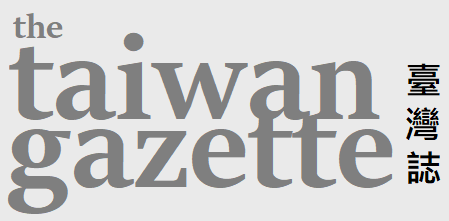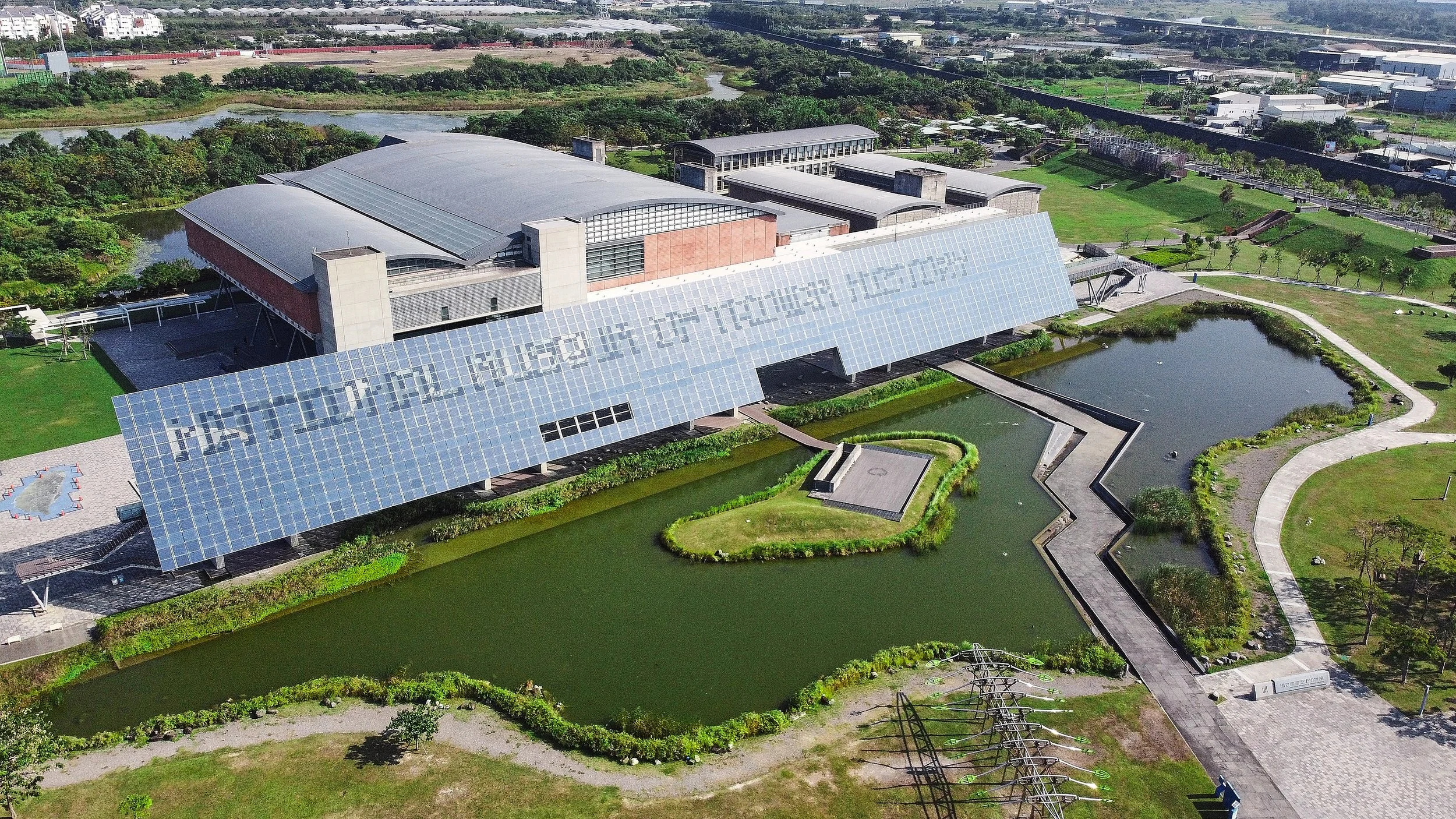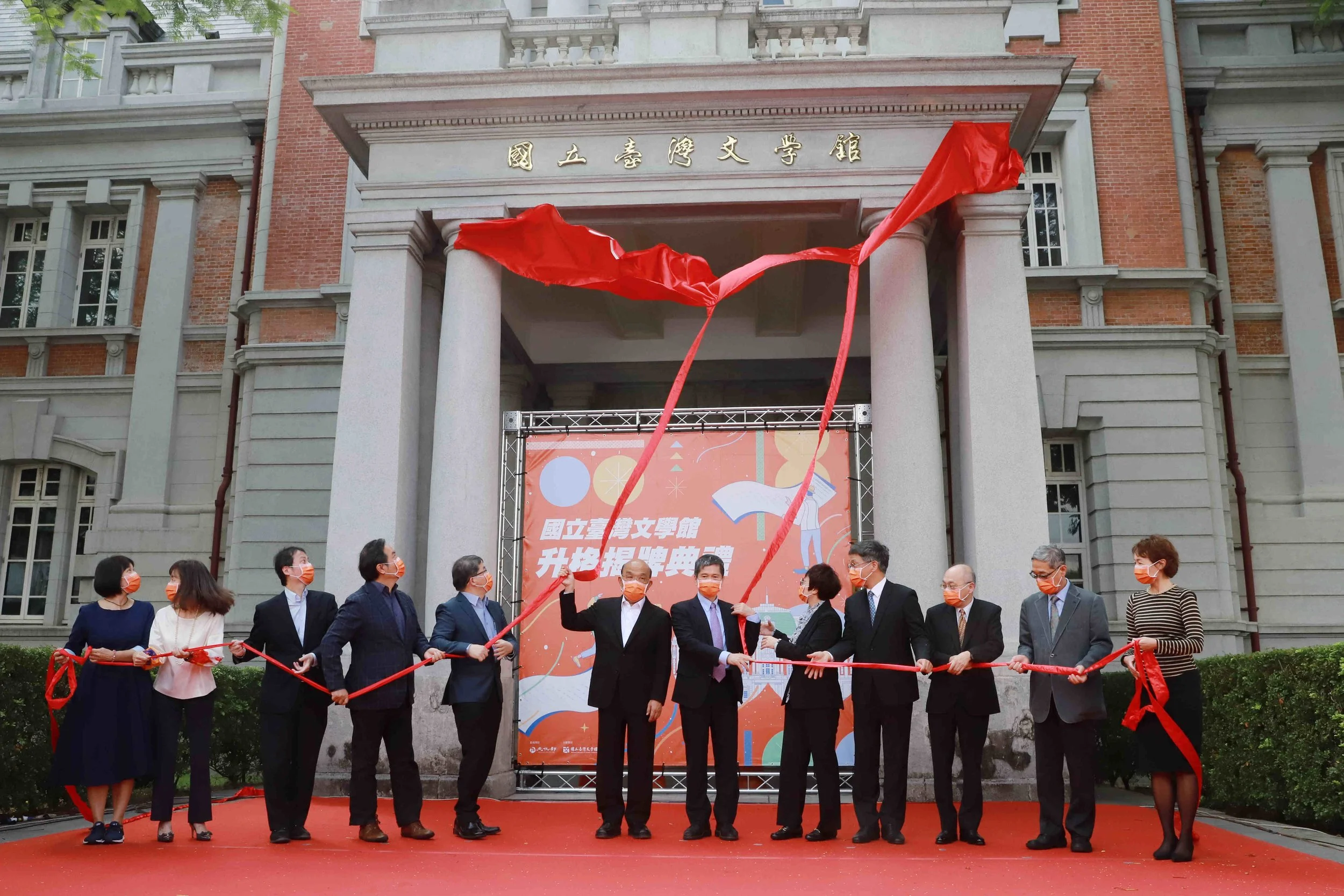Exhibiting “Taiwan History”: An Interview with Lung-chih Chang (Part 2)
The field of Taiwan history has gained increasing visibility in academia, both in Taiwan and abroad. Before the lifting of martial law in 1987, however, the production and dissemination of Taiwan-related knowledge in Taiwan either failed to receive organized institutional support or was subsumed under an anti-Japanese and China-centered historiography. The establishment of the field of Taiwan history corresponded to Taiwan’s democratization and the emergence of a “Taiwan consciousness” in the 90s and 00s.
The Taiwan Gazette is pleased to interview Dr. Lung-chih Chang (張隆志) to discuss the past and present of the field of Taiwan history and the role the National Museum of Taiwan History will play in introducing Taiwan history to domestic and international visitors and exhibiting Taiwan as an “island of encounters.”
Dr. Chang is Director of the National Museum of Taiwan History and Associate Research Fellow and former deputy Director of the Institute of Taiwan History, Academia Sinica, Taiwan. He received his Ph. D. in History and East Asian Languages from Harvard University. Dr. Chang has been a visiting scholar in Tokyo University, Cambridge University and Heidelberg University. His research interests include social and cultural history, comparative colonialism, historiography and public history. He is now working on a manuscript about historiography and public memory in contemporary Taiwan.
This interview is published in two parts. Part 1 will focus on the formation of Taiwan history as an academic field of study; Part 2 will concentrate on the founding of the NMTH and how the museum will establish its connections to Taiwanese and international visitors.
This interview was conducted online in English and has been edited for clarity. It features as part of our special issue: Encountering Everyday Life: Taiwan in Museums.
Interviewed by Yu-Han Huang
Transcribed and edited by Sabrina Teng-io Chung
Taiwan Gazette: Perhaps we could proceed to the second part of our interview, turning our focus to the institutional history of the National Museum of Taiwan History (NMTH). Our first question concerns how Taiwan history was exhibited before the founding of the Museum. In Taiwan, people used to say that there is “no Taiwan in the National Museum of History, and no history in the National Taiwan Museum” (歷史博物館沒有臺灣, 臺灣博物館沒有歷史). Before the founding of the NMTH, what roles did museums such as the Provincial Museum of Taiwan (臺灣省立博物館), National Museum of History (國立歷史博物館), or provincial and local archival committees (文獻會) play in introducing Taiwan history to the public?
Lung-chih Chang: The NMTH is itself a product of Taiwan’s democratization and the rise of the field of Taiwan history in post-martial law Taiwan. Prior to the founding of the NMTH, museums in Taiwan put emphasis on displaying Taiwan’s natural history, indigenous cultures, or art crafts from China. In their curatorial narrative which is basically framed around a China-centered historiography, Taiwan is considered a frontier site for Chinese immigration. With the rise of Taiwan-centered historical studies and a growing Taiwanese consciousness, alongside a research focus on the land and its people as opposed to political regimes and great personalities, I think there has been a drastic change in exhibition practices in Taiwan after the lifting of martial law.
Taiwan Gazette: What might be these exhibitions’ connections with the public? For example, how did a China-centered historiography affect the general public’s understanding of Taiwan history?
Lung-chih Chang: We could take the National Palace Museum (國立故宮博物院) as an example. It was once deemed a repository of the great Chinese civilizations, a site displaying the grand narrative of a China-centered historiography. Though being considered as part of the Chinese empires, Taiwan only occupied a peripheral or frontier position. There was no place for Taiwan as a subject of display in those grand narratives.
Today, the National Palace Museum has been transformed from a site displaying the great treasures of the Chinese dynasties into a more open and friendly museum for domestic and international visitors alike. They have been organizing an increasing number of Taiwan-oriented or Taiwan audience-oriented exhibitions. These transformations could also be considered as part of Taiwan’s democratization and the growth of Taiwan’s civil society. The museum itself is changing as a response to the shifting political and academic trends on the island.
Taiwan Gazette: We know that preparations for the founding of the NMTH were made in the 90s. How should we understand these preparation processes in relation to the institutionalization of the field of Taiwan history? When working on those preparations, how did museum staffer distinguish their curatorial practices and research approaches from existing ones?
Lung-chih Chang: I would consider the establishment of the NMTH not as a separation from the main museum traditions of postwar Taiwan. It was the result of a convergence of various traditions in the museum cultures and traditions in Taiwan, along with the growing influence and greater recognition of Taiwan history as a field in and of itself.
During the museum’s preparation phase, staffer made use of various museum techniques and knowledge in combination with the wealth of knowledge on Taiwan history in their curatorial arrangements. It was the combination of the two that made the NMTH possible. Though, at present, the NMTH is the only Taiwan-centered history museum on the island, there exist other Taiwan-centered museums that focus on, for example, the prehistory of Taiwan, Taiwan’s artistic tradition, and more. The NMTH is only one among many cases that was made possible by the rise of a Taiwanese consciousness and the growing popularity of Taiwan-centered knowledge production during the post-martial law era.
Taiwan Gazette: Thank you very much for your detailed explanations. Could we now turn our focus on the museum itself? We know that the museum takes as its mission the research, collection, promotion, and exhibition of sources and archival materials related to Taiwan. Could you introduce the museum and its collection to us?
Lung-chih Chang: The easiest way to take a glance over our museum collection is to visit our website and the museum. The website has introductory texts in various languages and a user-friendly interface to introduce our collections. As of today, we have more than 150,000 items ranging from written and visual sources that span from the 15th century all the way to the present. We have, for example, some travelogues of the Dutch period in the 16th and 17th century. We also have artifacts from the Sunflower Movement in 2014. We are now conducting a rapid response collection of the COVID-19 pandemic. So, our museum collection ranges from material culture to oral sources, from written documents to photographic images. It is indeed a treasury of Taiwan history. I ‘d like to take this chance to invite everyone to visit our website and the museum itself to study our collection firsthand.
Taiwan Gazette: Could you also talk about the museum’s new permanent exhibition which was just opened to the public earlier in 2021? What is the difference between the new permanent exhibition and the previous one?
Lung-chih Chang: Our former permanent exhibition was inaugurated in October 2011 when the museum was formally opened to the public. Entitled “This Land, These Peoples,” the exhibition was not organized around great personalities or historical heroes such as Koxinga, Liu Mingchuan, and others. Instead, it foregrounded the everyday life of people on Taiwan from the early days to the Qing, from the maritime era in the 17th century to the Chinese agricultural immigration in the 18th century, from the opening of treaty ports and international trade in the 19th century to the Japanese colonial period and the postwar era. Although the permanent exhibition was organized around a chronological narrative, you could see various aspects of the social and everyday life of the people on Taiwan in different eras.
A decade passed. We decided to innovate or reorganize the narrative of the permanent exhibition. While we did not make changes to the main storylines, there are three major aspects of this renewed permanent exhibition that are worth our attention. The first aspect is that in addition to the previous narrative focus on “This Land, These Peoples,” we put more emphasis on Taiwan as an “island of encounters.” Taiwan is an island of different encounters from the prehistoric days to our contemporary times. Today, we have immigrants and workers and friends from, for example, Southeast Asia, who have become one of the major ethnic groups in Taiwan. This makes Taiwan a plural and multicultural society. The notion of “an island of encounter” is one major focus of our renewed permanent exhibition.
The second major aspect is that we have drawn focus on the role of indigenous people and the importance of ethnic relations throughout the different eras of Taiwan. Instead of being merely a museum of Han immigration culture and Chinese society in Taiwan, the NMTH focuses on the encounter of various ethnic groups on the island.
The third aspect concerns our effort to give more narrative space to postwar Taiwan history, especially the democratization movement. We have also tried to narrate the different stories of individuals from all walks of life, striving to make the exhibition more interactive and accessible to visitors. These are basically the difference but also the continuity between the old and new permanent exhibitions.
Taiwan Gazette: Our last question is related to the changes of the museum’s upgraded administrative status in 2021. What might be the implication of these changes? What modifications will these changes make on the museum, especially in terms of its future development and its role in the institutionalization of the field of Taiwan history?
Lung-chih Chang: The centennial of the founding of the Taiwan Cultural Association (臺灣文化協會) will take place two weeks after our interview (October 17). This is a very important historical moment and commemoration date for the National Museum of Taiwan History as well as the National Museum of Taiwan Literature (國家臺灣文學館; NMTL). Both museums will be elevated to a third-class institution within the organizational structure of Taiwan’s Ministry of Cultural Affairs. We will be on the same footing with the National Taiwan Museum (國立臺灣博物館) and the National Museum of Prehistory (國立臺灣史前文化博物館). The administrative elevation entails a formal recognition of the NMTH and the NMTL within the government’s administrative system. More importantly, with this administrative elevation, we will have more resources to promote Taiwan-related historical studies and advance our status from a national museum to an internationally recognized museum. The role of internationalization will make the museum a window for the world to understand Taiwan. Our “internationalized” museum will also serve as a platform or gateway for the Taiwanese people to interact with the international community. I think this will be our new mission following the administrative elevation.
Taiwan Gazette: What you just mentioned about the internationalization of the museum is very interesting. What might the museum do to internationalize itself? In what ways will it strive to engage with its domestic and international visitors?
Lung-chih Chang: Since the past decade, the NMTH has established itself as a museum for everyone in Taiwan. We have successfully established ties with domestic visitors on various aspects, from museum exhibitions to field historical research. With the latest administrative elevation, we would be targeting international visitors, trying to strengthen our connections with important history museums in other countries and areas. By focusing more on contemporary issues and cultivating social dialogues, we would try to make the museum more future-oriented, both in response to the digital turn in museum studies and the changes in post-pandemic societies. Our response to these global and international issues and topics would be a new mission and challenge for the NMTH.
References:
Chang, Lung-chih. “From Island Frontier to Imperial Colony: Qing and Japanese Sovereignty Debates and Territorial Projects in Taiwan, 1874-1906.” PhD diss. Harvard University, 2003.
---. “Telling Histories of an Island: The Academics and Politics of History Textbook in Contemporary Taiwan.” In Designing History in East Asian Textbooks: Identity Politics and Transnational Aspirations, 117-34. Edited by Gotelind Muller. New York: Routledge, 2011.
---. “Island of Memories: Postcolonial Historiography and Public Discourse in Contemporary Taiwan.” International Journal for History, Culture and Modernity 2, no. 3 (2014): 229-44.
---. “Colonialism and Modernity in Taiwan: Reflections on Contemporary Taiwanese Historiography.” In Broken Narratives: Post -Cold War History and Identity in Europe and East Asia, 133-164. Edited by Susanne Weigelin-Schwiedrzik. Translated by Axel Schneider. Amsterdam: Brill, 2014.





